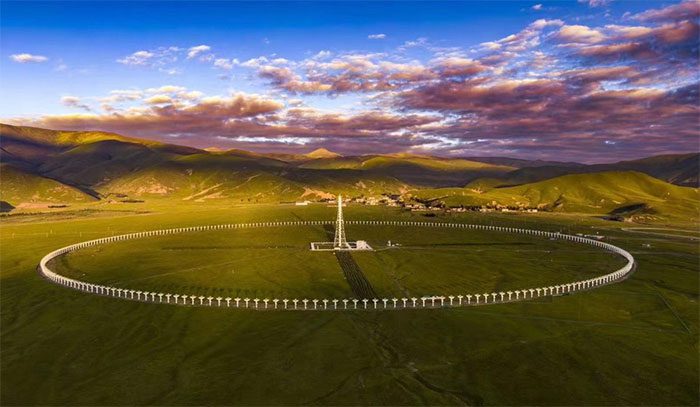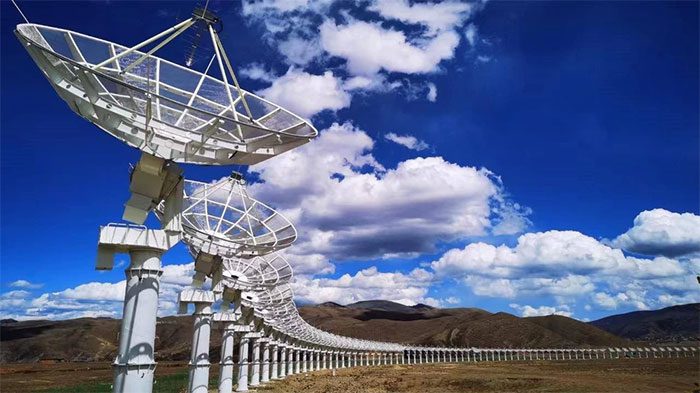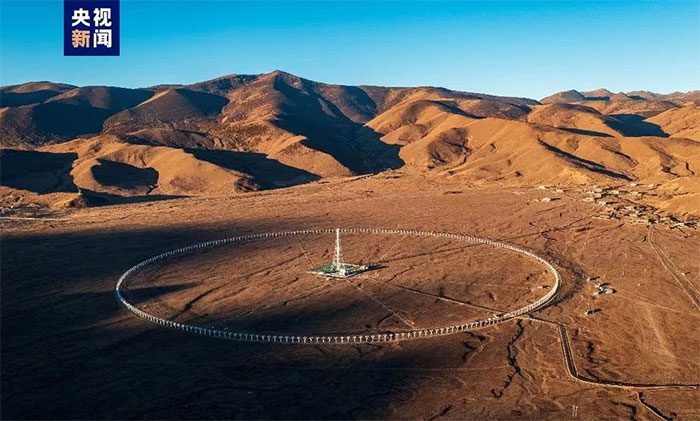The Chinese Academy of Sciences (CAS) has announced that the Daocheng Solar Radio Telescope (DSRT) has successfully passed a crucial test, marking the completion of the world’s largest telescope dedicated to studying the Sun and its effects on Earth.

This telescope will provide high-quality observational data for solar research.
The telescope represents a groundbreaking development in China’s comprehensive space environment monitoring network, which is part of Phase 2 of the Meridian Project. According to CAS, it will provide high-quality observational data for solar studies and related weather phenomena.
Located in the southwestern province of Sichuan at an altitude of over 3,820 meters, the DSRT telescope array consists of 313 six-meter-wide parabolic antennas arranged in a large circle surrounding a 100-meter-high calibration tower. This “high-tech eye” operates in the frequency range of 150 to 450 megahertz to capture images with high accuracy.

The telescope is built at an altitude of over 3,820 meters.
The tests have shown that Daocheng has achieved continuous and stable spectroscopic observation capabilities of solar activity, with a maximum observation range of 10 solar radii. Additionally, all technical indicators meet or exceed design requirements. A solar radius is a unit of measurement in astronomy, equivalent to the current radius of the Sun, approximately 695,500 km.
Yan Jingye, the project director at CAS, stated that short-term changes in the space environment caused by solar activity are referred to as space weather. High-quality monitoring and forecasting of space weather is crucial for the operation of high-tech systems such as space projects and satellite communications.
According to him, this telescope can monitor various solar flare events and phenomena such as solar glows, allowing for predictions and assessments of the Sun’s impact on Earth.

This telescope can monitor various solar flare events.
Furthermore, scientists have noted that Daocheng can detect pulsars, aiding in the development of methods for tracking asteroids and radio bursts. Notably, in March of this year, while still in the debugging phase, this telescope system successfully identified the “flickering” phenomenon of pulsars during its first experiment researching this activity, based on a series of radio images.
Moving forward, the DSRT telescope is expected to monitor solar activities during the day. It will also conduct joint observations with other major scientific and technological infrastructures in the country, including the 500-meter Aperture Spherical Radio Telescope (FAST), known as the China Sky Eye in Guizhou, the deep space radar observation facility in Chongqing known as the China Composite Eye, and the radar system in Hainan.
China initiated the Meridian Project in 2008, establishing a monitoring network comprising 31 ground stations to study space weather and investigate the processes that generate “intense” weather events.
“Humanity is entering a golden age of solar astronomy, as many large solar telescopes are now operational around the world,” remarked Maria Kazachenko, a solar physicist at the University of Colorado, Boulder.





















































